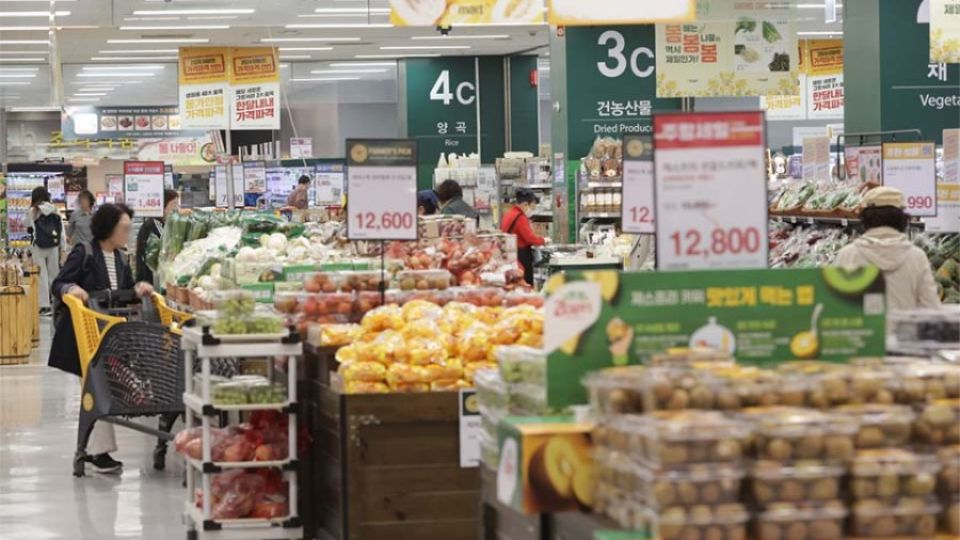September 5, 2024
SEOUL – It is fortunate for South Korea to see inflation fall to its intended level last month.
The consumer price index, a broad-based measure of prices for goods and services, rose 2 percent on-year in August, according to Statistics Korea, Tuesday. It was the lowest increase in 41 months since March 2021 when it edged up 1.9 percent. The Bank of Korea finally met its inflation target of 2 percent.
Above all, it is encouraging that Korea reached the 2-percent mark earlier than the US and eurozone, whose annual inflation rates dropped to 2.9 percent and 2.2 percent, respectively, in July, according to their latest data.
Arguably Korea curbed inflation by means of a less tight monetary policy. Its annual benchmark interest rate of 3.5 percent is lower than that of the US (5.5 percent) and the EU (4.25 percent).
The prices of petroleum products rose 0.1 percent in August, slowing from 8.4 percent in July. The prices of agricultural products climbed 3.6 percent, down from 9.0 percent a month earlier. The government said that the deceleration of oil and agricultural inflation played a big role in dampening the overall uptrend of prices.
However, it is concerning that prices of fresh foods appear unstable. Price hikes for fresh fruit decreased to 9.6 percent last month after soaring to 21.3 percent in July. On the other hand, prices of domestically grown pears and apples — two types of fruit in great demand around Chuseok (the Korean Thanksgiving holiday) every year — rose sharply to 120.3 percent and 17.0 percent, respectively. Many consumers grumble that fruit is still too expensive to buy readily.
The prices of fresh vegetables dropped 1.7 percent in August from the same month last year. But on a month-on-month basis, they rose 6.3 percent in July and 16.5 percent in August.
The Bank of Korea forecast that if not for additional impacts down the road, inflation will likely continue a stable trend at current levels for the time being. The government hinted at the possibility of adjusting the annual inflation rate downward from its current 2024 outlook of 2.6 percent.
If the government’s expectations become a reality, there would be little more to be desired, but considering consumers feel somewhat different from the government about statistics showing inflation has eased, it’s too soon to be entirely relieved.
The prices for services and eating out rose 2.3 percent and 2.8 percent, respectively, still hovering over the overall inflation of 2 percent. Electricity, gas and water prices climbed 3.3 percent, up from 1.0 percent in July. Electricity and gas prices likely to be raised in the second half of the year are threatening to stimulate inflation.
Also, ascending real estate prices in the Seoul area are putting upward pressure on consumer prices.
The additional impacts that the government mentioned mean extreme weather and volatile international petroleum prices. These variables can have an extensive influence on the prices of many goods and services. Now is the time to watch out for adverse factors at home and abroad that can thwart efforts to keep inflation low.
The government plans to monitor the prices of 35 items in high demand on a daily basis until Sept. 13, three days before Chuseok. For 10 of them, it will take a temporary measure to keep import tariffs lower than usual until the end of the year. In addition, the government will have to check price fluctuations regularly for other items closely related to the daily lives of the working class and stay prepared to increase supply in a timely manner in an emergency.
Now that the annual inflation rate eased to 2 percent — which is the goal set by the central bank — conditions are riper than ever for lowering the benchmark interest rate. The BOK has maintained the rate at 3.5 percent since January 2023 to suppress inflation.
Lowering the benchmark interest rate is urgent to lessen the hardship of consumer life aggravated by continued sluggish demand and high interest rates. A soft landing for the economy cannot take place with high inflation. Inflation’s slowdown has opened a window to cut the interest rate. The authorities must stay focused on keeping inflation low.


